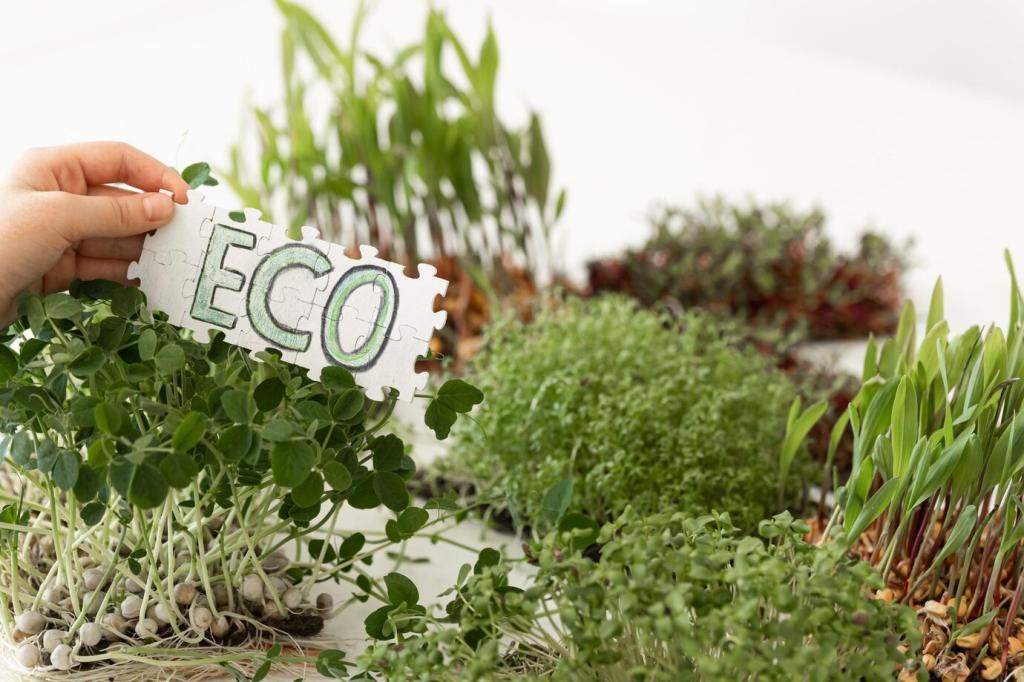
Sustainable Cleaning Products for Sofas and Chairs: A Fresh Start at Home
Chosen theme: Sustainable Cleaning Products for Sofas and Chairs. Welcome to your cozy corner for planet-friendly upholstery care, where fabric longevity, indoor air quality, and everyday practicality come together. Subscribe to stay inspired, ask questions, and share your green cleaning wins.
Why Sustainable Upholstery Cleaners Matter
Health and Indoor Air Quality
Low-VOC, biodegradable upholstery cleaners limit harsh fumes, making living rooms more comfortable for kids, pets, and sensitive lungs. Fragrance-free or naturally scented options help avoid headaches, lingering chemical smells, and unnecessary irritants. Tell us what scents, if any, still feel clean without overpowering your space.
Fabric Longevity through Gentle Chemistry
Sustainable cleaners emphasize pH-balanced surfactants and enzyme systems that lift soil without stripping color or weakening fibers. Avoiding chlorine bleach, optical brighteners, and aggressive solvents means fewer fiber breaks and less pilling. Comment if you have a fabric that fades easily; we will tailor future guides.
Certifications That Actually Mean Something
Look for credible markers like EPA Safer Choice, EU Ecolabel, and Cradle to Cradle to verify safer chemistry and responsible production. Cruelty-free, readily biodegradable formulations are a bonus. Share which labels you trust and where you struggle to verify claims when shopping for upholstery cleaners.
Understanding Fabrics: Match Cleaner to Material
Microfiber and Performance Fabrics
Microfiber often reacts to over-wetting, so use distilled water, fine-mist application, and plant-derived surfactants. Blot gently, let dry, then brush to restore the nap. If you have a microfiber success or disaster story, drop it below—your experience helps others avoid frustrating rinse cycles.
Natural Fibers: Linen and Cotton
Linen and cotton want minimal moisture and a mild, plant-based soap or enzyme spot cleaner. Work in small zones, blot patiently, and protect seams. Avoid scrubbing rings by feathering edges outward. Subscribe to receive our printable fabric-matching chart for fast, low-waste cleaning decisions.
Leather and Vegan Leather
Use pH-neutral, sustainable leather cleaners and nourish with plant wax conditioners to prevent cracking. Skip vinegar and strong alcohol on delicate finishes. Keep cushions out of direct sun while drying. Tell us your leather color and climate; we will share seasonal care tweaks to reduce product use.
Stain Strategy the Sustainable Way
Remove crumbs with a vacuum first, then blot with a white, reusable cloth to prevent dye transfer. Rubbing spreads stains and frays fibers. A berry smoothie once soaked our studio armchair; blotting and patience with a plant-based foam saved the seat and our filming schedule.


Stain Strategy the Sustainable Way
For food, pet, and sweat stains, enzymes need dwell time to break proteins gently. Oxygen boosters like sodium percarbonate help with odor and discoloration without chlorine. Always verify colorfastness. Tell us your toughest stain and we will build a step-by-step, sustainable plan.
Tools and Techniques that Save Resources
01
Refill, Reuse, Reduce
Choose concentrated tablets or pouches and refillable sprayers to cut plastic waste and shipping emissions. Label bottles with dilution ratios to avoid overuse. If you have a local refill shop, shout it out; collectively we can build a friendly map of sustainable sources.
02
Smart Application
Use foaming triggers or microfiber applicators that deliver thin, even coverage. Work from the outside of the stain inward, protecting surrounding fabric with a towel. A soft-bristle brush made from recycled plastic helps lift soil without fraying fibers. Share your favorite low-waste tool below.
03
Drying Without Waste
Cross-ventilation, fan airflow, and cushion rotation speed drying without heaters. Blot out extra moisture with washable towels, then let air finish the job. Quick drying prevents mildew and odors, reducing repeat cleanings. Comment with your climate and we will suggest drying tweaks.
Safety and Sensitivity for Real Homes
Fragrance and Dye Considerations
Fragrance-free or naturally scented options with low allergen potential protect sensitive users. Skip unnecessary dyes and heavy perfumes that linger in cushions. If you love a smell, test sparingly first. Vote in the comments: unscented forever, or a whisper of citrus?
Pet- and Baby-Safe Practices
Store concentrates securely, lock sprayers, and ventilate rooms. Some essential oils are not pet-friendly, particularly for cats. Choose certified products with clear ingredient disclosure. Share your household setup—babies crawling, curious dogs—and we will recommend gentle routines that still deliver clean cushions.
Label Literacy
Scan for pH range, preservative type, and clear directions. Avoid mystery blends that hide under vague names. Review safety data sheets when available. If a claim sounds magical, it probably is. Subscribe for our label-decoding checklist and demystify upholstery product shopping.
Real-Home Stories and Repeatable Routines
When a mug tipped on a pale sofa, we blotted with cold water, applied a plant-based foam, and feathered the edges to avoid rings. Two rounds, no smell, no halo. Tell us your last-minute save and we will highlight it next month.
Ingredients That Work and Respect the Planet
Seek alkyl polyglucosides, decyl or coco-glucoside, citrates, and enzyme blends. Avoid optical brighteners, chlorine, and phosphates. PFAS-free and readily biodegradable are musts. Tell us which ingredient lists feel confusing, and we will translate them into plain language.
Packaging and Footprint
Prefer concentrated refills, recycled or mono-material packaging, and companies publishing life-cycle data. Refillable glass or durable PET beats single-use. If you have a favorite package design that actually reduces waste, drop a note; we love clever engineering.
Value Without Waste
Calculate cost-per-use, not just bottle price. Proper dilution, foam triggers, and targeted spot cleaning stretch every ounce. Keep a simple cleaning log to avoid repetitive passes. Share your savings tips and we will compile a community guide.
Join the Sofa Care Circle
Subscribe for monthly micro-lessons, a printable stain decision tree, and gentle reminders aligned with seasons. Tell us your city so we can surface local refill ideas. Community voices shape our next sustainable cleaning experiments.
Ask-Me-Anything: Upholstery Edition
Post your trickiest stain, fabric label, and a photo description, and we will respond with a sustainable plan. Patch testing instructions included. The more details you share, the better our guidance gets for everyone.
Share and Swap
Have extra concentrate or discovered a refill station? Share responsibly, label everything, and note dilution ratios. We will compile a reader-sourced map and safety checklist. Comment to be included and help neighbors clean greener.
